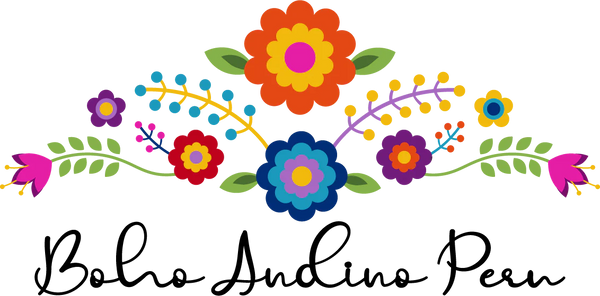The Vibrant World of Peruvian Handmade Products and Natural Dyes
Peru's rich cultural heritage is beautifully expressed through its handmade products, which are celebrated for their vibrant colors and intricate designs. At the heart of this artistry lies the tradition of using natural dyes, a practice that has been passed down through generations. These dyes, derived from plants, insects, and minerals, not only add stunning hues to textiles but also reflect a deep connection to the natural environment. Join me as we explore the fascinating world of Peruvian handmade products and the natural dyes that bring them to life.
A Heritage of Color
Peruvian artisans have been mastering the art of natural dyeing for centuries. This ancient practice is a testament to their ingenuity and profound understanding of the natural world. The use of natural dyes is integral to the creation of many Peruvian handicrafts, including textiles, which are renowned for their beauty and durability.
The Sources of Natural Dyes
-
Cochineal: One of the most famous natural dyes, cochineal is derived from a small insect found on cactus plants. This dye produces a rich red color that has been highly valued since pre-Columbian times. It was so prized that it became one of Peru's most significant exports during the colonial period.
-
Indigo: Obtained from the leaves of the indigo plant, this dye provides a deep blue color. Indigo-dyed textiles are some of the most striking examples of Peruvian craftsmanship.
-
Chilca: This plant yields shades of green. The leaves and stems are used to create a variety of green hues, which are often seen in the intricate patterns of Andean textiles.
-
Other Plants and Minerals: The diversity of Peru's flora provides an array of colors. For instance, flowers like the q'olle flower produce yellow dyes, while the molle tree offers a range of pinks and reds. Additionally, minerals such as iron oxide can be used to produce earthy tones.
The Dyeing Process
The process of dyeing fibers with natural dyes is meticulous and requires a deep knowledge of traditional techniques. Here’s a simplified overview:
-
Preparation: The fibers, usually wool or cotton, are cleaned and prepped for dyeing. This step ensures that the dye will adhere properly to the fibers.
-
Mordanting: A mordant, typically a natural mineral like alum, is applied to the fibers. This helps to fix the dye, making the colors more vibrant and long-lasting.
-
Dye Extraction: The natural dye sources are harvested and processed to extract their colors. This can involve boiling plants, fermenting leaves, or drying and crushing insects.
-
Dyeing: The fibers are submerged in the dye bath. The duration and temperature of the dye bath can vary, affecting the intensity of the color.
-
Rinsing and Drying: Once the desired color is achieved, the fibers are rinsed and then dried, often under the sun, which can enhance the vibrancy of the colors.
The Art of Peruvian Textiles
The naturally dyed fibers are then woven into beautiful textiles, each piece reflecting the artisan's skill and creativity. Traditional Andean weavers use backstrap looms to create intricate patterns that often carry symbolic meanings. These textiles are used to make a variety of products, including:
- Ponchos: Iconic garments that are not only practical for the Andean climate but also serve as a canvas for displaying intricate patterns and vibrant colors.
- Blankets and Throws: Often used in homes, these items showcase the rich tapestry of Andean design and color.
- Scarves and Shawls: Lightweight and beautifully dyed, these accessories are popular worldwide.
- Bags and Belts: Functional yet decorative, these items highlight the versatility and beauty of natural dyes.
Preserving a Cultural Legacy
Today, the tradition of using natural dyes in Peruvian handicrafts is not just about preserving an ancient art form; it's also about fostering sustainable and environmentally friendly practices. By using natural dyes, artisans minimize the environmental impact of their craft, avoiding the harmful chemicals often found in synthetic dyes.
Conclusion
The use of natural dyes in Peruvian handmade products is a vivid celebration of the country's cultural heritage and natural beauty. Each handcrafted item is a unique piece of art, carrying the legacy of ancient techniques and the vibrant colors of Peru’s diverse landscapes. By appreciating and supporting these artisans, we not only enjoy their beautiful creations but also help preserve a rich cultural tradition for future generations.
So next time you find yourself admiring a colorful Peruvian textile, remember the natural dyes and skilled hands that brought it to life. Through these vibrant creations, the spirit of Peru’s heritage continues to thrive and inspire.

